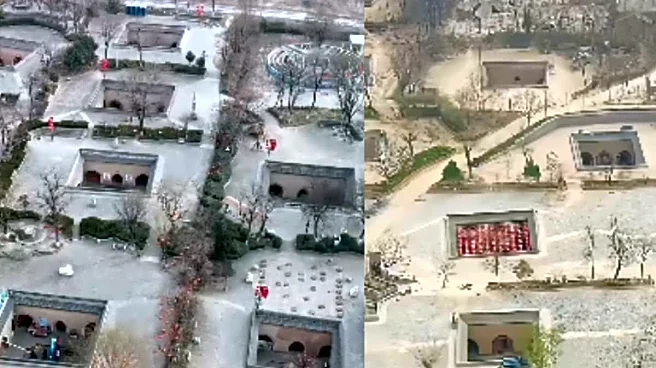As the world races to find climate-friendly housing solutions, architects are increasingly turning to ancient wisdom for answers. One striking example comes from China’s Loess Plateau, where yaodongs –
traditional cave dwellings dating back more than 4,000 years – continue to offer a masterclass in sustainable architecture. Despite the surge of modern construction, these earthen homes remain in active use today, sheltering an estimated 40 million people.
Meaning “kiln caves,” yaodongs are named for their distinctive arched interiors, which resemble traditional kilns. Found predominantly in the provinces of Shanxi, Shaanxi, Gansu and Henan, these structures are closely tied to the unique geography of the Loess Plateau. Soft, easily carved loess soil allowed ancient builders to dig deep, stable dwellings that offered natural insulation long before the term “energy efficiency” entered modern vocabulary.
Depending on the landscape, yaodongs take one of three forms. Those built along hillsides often rise several stories high, whereas flatland yaodongs begin with excavating large rectangular wells—some as deep as eight metres—later reinforced into courtyard homes. In other cases, bricks or stones are used to create arched chambers that are sealed with compacted soil.
A Living Tradition Spanning Millennia
Historians believe the first yaodongs emerged during the Xia Dynasty (2100–1600 B.C.). Over the centuries, their design evolved significantly. By the Han Dynasty, residents enjoyed chimneys, kitchens and heated brick beds. Under the Ming and Qing dynasties, yaodong architecture spread even more widely across northern China.
Architect David Wang of Washington State University notes the uniqueness of this enduring heritage. “The cave topology is one of the earliest human architectural forms… What is unique to China is the ongoing history it has had over two millennia,” he told the Los Angeles Times.
Why Yaodongs Still Work Today
The continued popularity of yaodongs can be attributed to their resource-efficient design. Built primarily from locally available loess soil, they require fewer materials than conventional homes. The thick earthen walls naturally regulate temperature—remaining cool in scorching summers and warm in freezing winters.
Another ingenious feature is the kang, the heated brick bed found in many yaodongs. Connected internally to a stove and chimney, the kang channels hot air and smoke beneath its surface, providing an effective and economical heating system during the winter months.
These sustainable qualities align with traditional Chinese values of harmony between humans and nature—an ethos that modern architects increasingly revisit.
A Design Not Without Risks
Despite their advantages, yaodongs are vulnerable to natural disasters. The catastrophic 1556 Shaanxi earthquake, which claimed an estimated 830,000 lives, caused massive cave collapses due to the loess soil’s susceptibility to erosion.





/images/ppid_59c68470-image-176366503544289917.webp)

/images/ppid_59c68470-image-176374504346356414.webp)



/images/ppid_59c68470-image-176370502671090654.webp)
